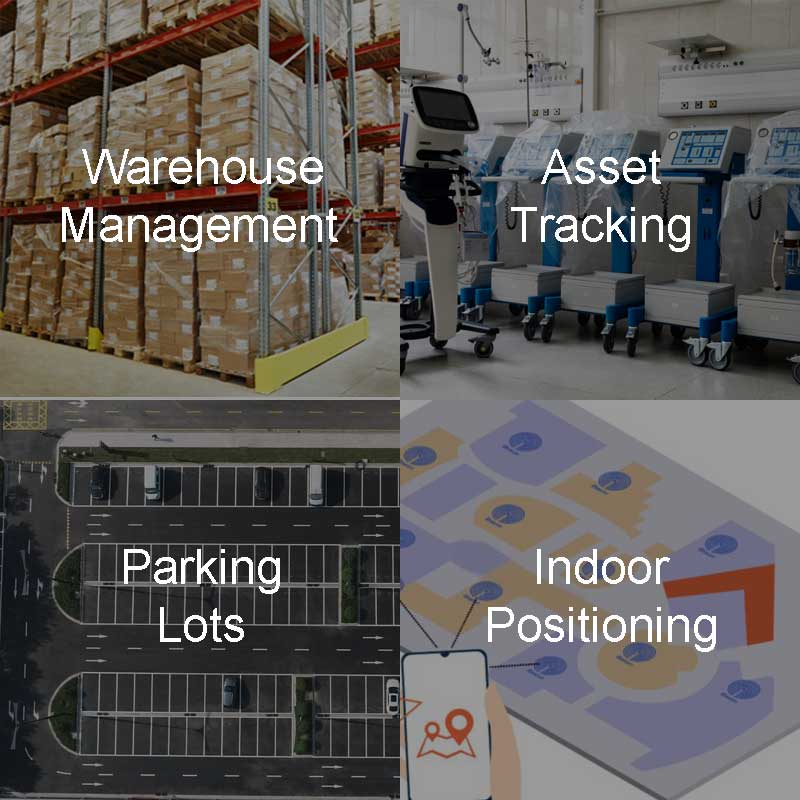
BLE Tags, powered by Bluetooth Low Energy (BLE) technology, have emerged as a versatile and cost-effective solution for tracking and managing assets across various industries. These small, low-power devices transmit signals that can be detected by smartphones, tablets, or dedicated receivers, enabling real-time monitoring and data collection. This article explores the diverse applications of BLE Tags and how they enhance operational efficiency in different sectors.
BLE Tags: A Brief Overview
BLE Tags are compact, wireless devices that leverage BLE technology to transmit data over short distances. Unlike traditional Bluetooth, BLE is designed to conserve energy, allowing tags to operate for extended periods without frequent battery replacements. These tags can be attached to movable assets, equipment, or even personnel, providing continuous updates on their location and status.
Applications of BLE Tags
Asset Management in Warehouses
In warehouse environments, BLE Tags are revolutionizing asset management. By attaching these tags to pallets, inventory items, and equipment, warehouses can achieve real-time tracking and monitoring of their assets. This not only improves inventory accuracy but also reduces the time spent on manual tracking and auditing. BLE Tags can also measure environmental parameters such as temperature and humidity, ensuring that sensitive goods are stored under optimal conditions.
Vehicle Tracking and Fleet Management
BLE Tags are increasingly being used in fleet management to track the location and status of vehicles. These tags can be attached to vehicles, trailers, and even individual components, providing real-time data on their whereabouts and usage. This information helps fleet managers optimize routes, reduce fuel consumption, and ensure timely maintenance. BLE Tags are particularly useful in urban environments where GPS signals may be weak or unreliable.
Healthcare and Patient Monitoring
In the healthcare sector, BLE Tags are being integrated into wearable devices such as heart rate monitors, glucose meters, and oxygen saturation sensors. These devices transmit vital health metrics to healthcare providers in real-time, enabling prompt interventions and reducing the need for frequent in-person check-ups. BLE Tags are also used for tracking medical equipment, ensuring that critical devices are always available when needed. Additionally, BLE Tags can monitor the location of vulnerable patients, such as infants or those with dementia, to prevent accidental wandering.
Staff Safety and Emergency Response
BLE Tags play a crucial role in enhancing staff safety in high-risk environments. By attaching these tags to personnel uniforms or equipment, organizations can monitor the real-time location of their staff. In case of an emergency, such as a fall or an attack, BLE Tags can send instant alerts to response teams, enabling a swift and effective response. This application is particularly beneficial in healthcare facilities, construction sites, and emergency services.
Indoor Navigation and Wayfinding
BLE Tags are also being used to facilitate indoor navigation in complex environments such as hospitals, airports, and large buildings. By placing BLE Tags at strategic points, these systems can guide individuals to specific departments or locations, saving time and enhancing user satisfaction. This technology is especially useful for patients with mobility limitations or visitors who are unfamiliar with the facility.
Deployment and Integration
Deploying BLE Tags involves a few key steps:
- Identify Target Applications: Determine the specific use cases for BLE Tags, such as asset tracking, personnel monitoring, or indoor navigation.
- Customize for Specific Needs: BLE Tags can be tailored to meet the unique requirements of each application, from setting up geo-fencing to creating multi-user tracking systems.
- Train Personnel: Ensure that staff are trained on how to deploy, monitor, and retrieve data from BLE Tags. This includes understanding how the technology integrates with existing systems.
- Collaborate with Experts: Partner with companies specializing in BLE technology to ensure successful integration and ongoing support.
Conclusion
BLE Tags offer a powerful and cost-effective solution for asset management, personnel monitoring, and real-time data collection. Their low power consumption, small size, and versatility make them suitable for a wide range of applications across various industries. By leveraging BLE technology, organizations can enhance operational efficiency, improve safety, and gain valuable insights into their operations. As BLE technology continues to evolve, the potential for further innovation and application expansion remains vast, making BLE Tags an essential tool for modern businesses and institutions.


